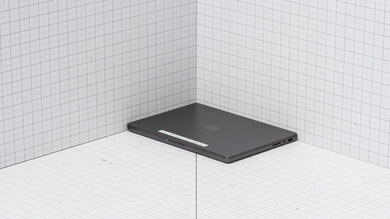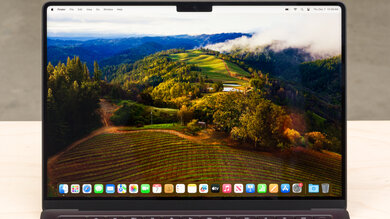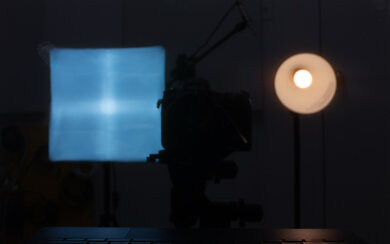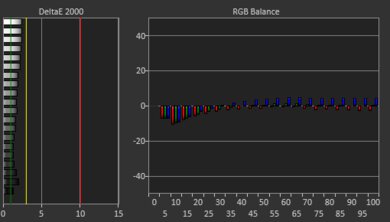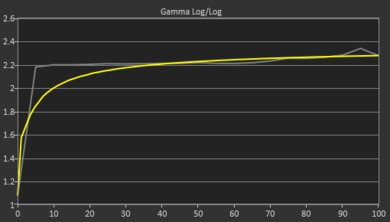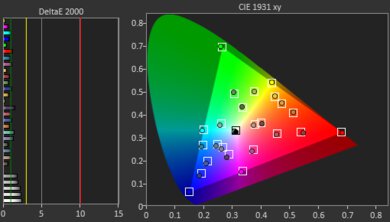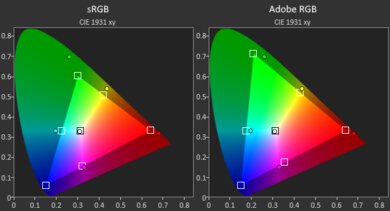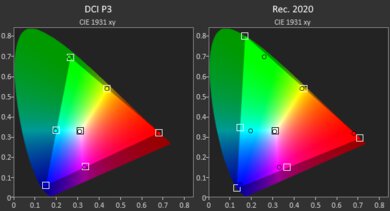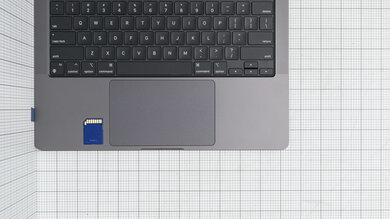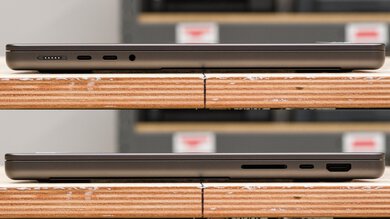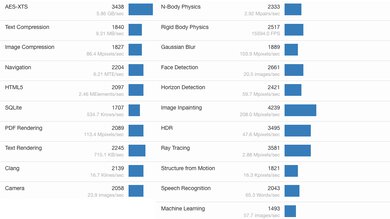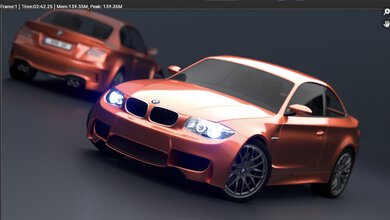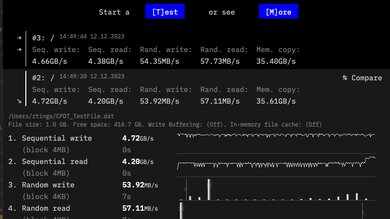The Apple MacBook Pro 14 (M3, 2023) is a premium workstation laptop. It replaces the Apple MacBook Pro 14 (M2, 2023) from early 2023. In addition to the Pro and Max SoC configurations, this new model is available with a base M3 chip, similar to the discontinued 13-inch MacBook Pro with Touch Bar. The M3 Pro/Max SoCs bring increased memory support (up to 128GB on M3 Max) as well as hardware-accelerated ray tracing and AV1 decoding. Also new is the Space Black color, replacing Space Gray on models with a Pro or Max processor. Memory and storage configuration max out at 128GB and 8TB, respectively, though there are restrictions depending on the chosen model. The port selection remains the same as its predecessor on the Pro and Max models; however, the base M3 model has one fewer USB-C and only supports Thunderbolt 3.
See our unit's specifications and the available configuration options in the Differences Between Variants section.
Our Verdict
The Apple MacBook Pro M3 is excellent for school use. It's easy to carry around due to its compact size, and its battery lasts easily through a full day of light use with plenty of charge to spare. The display looks sharp and bright, the keyboard feels spacious and tactile, and the touchpad is large and responsive. It's a fantastic device for students in fields like 3D design, science and engineering, or filmmaking, as Apple's M3 SoCs can handle nearly every type of workload. It has an excellent 1080p webcam for those attending classes remotely and a wide port selection for peripherals and external displays.
- Easy to carry around.
- All-day battery life.
- M3 Pro and Max SoCs can handle demanding workloads.
- Great keyboard and industry-leading touchpad.
- Wide port selection.
- Short key travel might cause fatigue over time.
The Apple MacBook Pro M3 is decent for gaming. The M3 Pro and Max models have the processing power to provide smooth gameplay in demanding games; however, the performance will vary depending on the game, as most titles can only run via Rosetta 2 since they aren't designed for Macs with an ARM-based chip. Additionally, while its Mini LED display's 120Hz refresh rate helps provide a responsive gaming experience, its slow response time causes noticeable ghosting in fast-moving scenes. On the upside, it has a fast SSD to help shorten loading times and doesn't get overly hot or loud under load.
- M3 Pro and Max SoCs can handle demanding workloads.
- 120Hz refresh rate.
- No thermal throttling.
- Doesn't get hot or loud under load.
- Display has slow response time.
- Few games run natively on macOS.
- Soldered RAM and SSD.
- Short key travel might cause fatigue over time.
The Apple MacBook Pro M3 is excellent for media consumption. It's very portable, and its battery lasts over twelve hours of video playback, giving you plenty of time to get through multiple full-length movies and TV show episodes. Its Mini LED display looks incredibly sharp, gets bright enough to overcome glare, and produces inky blacks. The display is also well-calibrated out of the box, so you get an accurate and natural-looking image. The speakers sound well-balanced and full, with a good amount of bass, and they get very loud with minimal artifacts at max volume. The only downside is the display's slow response time, which causes ghosting in fast-moving scenes.
- Easy to carry around.
- All-day battery life.
- Sharp, bright display with full DCI P3 coverage.
- Display produces deep blacks.
- Loud, full-sounding speakers.
- Display has slow response time.
The Apple MacBook Pro M3 is an outstanding workstation laptop. Its M3 Pro and M3 Max SoCs can handle nearly every type of workload, including demanding tasks like video editing, programming, 3D graphics, and scientific simulations. You can also do all of your color-sensitive work, as the display has full DCI P3 coverage and superb factory calibration. There's no thermal throttling under load, and while the keyboard gets a little warm, the fans are only a whisper. Unfortunately, none of the components are user-replaceable, so you need to get the configuration that best suits your needs upfront.
- M3 Pro and Max SoCs can handle demanding workloads.
- Sharp, bright display with full DCI P3 coverage.
- Wide port selection.
- No thermal throttling.
- Doesn't get hot or loud under load.
- Soldered RAM and SSD.
- Short key travel might cause fatigue over time.
The Apple MacBook Pro M3 is excellent for business use. This well-built laptop is easy to carry, and its battery lasts over 15 hours of light use, so you can go almost two days without plugging it in. It has a sharp, bright display, a comfortable keyboard, and a large, responsive touchpad. You get an excellent 1080p webcam for video calls and a fingerprint sensor to log in quickly. Its M3 SoCs can easily handle productivity tasks like web browsing, text processing, spreadsheets, and presentations. You can even make graphics and edit videos for your business. Unfortunately, none of the components are user-replaceable, and there's no USB-A port, so you'll need an adapter for your wired peripherals or dongles.
- Easy to carry around.
- All-day battery life.
- Great keyboard and industry-leading touchpad.
- Outstanding webcam.
- Wide port selection.
- Soldered RAM and SSD.
- Short key travel might cause fatigue over time.
Changelog
- Updated May 07, 2025: We've updated this review to Test Bench 0.8.3, which removes the viewing angle tests and adds a GPU Total Graphics Power comparison in the GPU section. The Pen Input test in the Extra Features section has also changed, as it now shows whether the laptop supports pen input rather than the inclusion of a stylus in the box. See the changelog for more details.
- Updated Jul 31, 2024: We've updated the Ports section because the macOS 14.6 firmware update has added support for an additional external display (with the lid closed) on the base M3 model.
- Updated Jan 22, 2024: We've updated the Battery section to specify that the base M3 model has a slightly smaller 70Wh battery.
- Updated Jan 18, 2024: Review published.
Differences Between Sizes And Variants
We tested the Apple MacBook Pro 14 M3 with an M3 Pro SoC (11-core CPU, 14-core GPU), 18GB of RAM, and 512GB of storage. The SoC, memory, and storage are configurable; the available options are in the table below.
| Screen |
|
|---|---|
| SoC |
|
| Memory |
|
| Storage |
|
| Color |
|
See our unit's label here.
Popular Laptop Comparisons
The Apple MacBook Pro M3 is one of the best workstation laptops on the market. Its build quality, as well as the quality of its display, touchpad, and speakers, are industry-leading. While you can find Windows laptops with faster CPUs and GPUs, none can match the MacBook Pro's battery life due to the power efficiency of Apple-made chips.
For more options, check out our recommendations for the best workstation laptops, the best business laptops, and the best laptops for video editing.
The Apple MacBook Pro 14 (M4, 2024) is a newer version of the Apple MacBook Pro 14 (M3, 2023). The 2024 model is largely the same design-wise, though there are a couple of upgrades and new features over its predecessor, including a higher display brightness of up to 1000 cd/m² when viewing SDR content (outdoors) and a nano-texture display option that further cuts down glare. There's also a new 12 MP camera with Center Stage support, a feature that keeps you centered in the camera frame when you move around. The base M4 model gains a third USB-C port with the same external display support as the M4 Pro models, and the Pro/Max models now support Thunderbolt 5, allowing for up to 120Gbps data transfer speeds. Performance-wise, the M4-series chips are considerably faster than the M3s, but unless you have an extremely intensive workload, you probably don't need to upgrade if you already own an M3 model.
The Apple MacBook Pro 14 (M3, 2023) is a newer version of the Apple MacBook Pro 14 (M1, 2021). The M3 model is better overall; it has a slightly brighter display, louder speakers, HDMI 2.1, and Wi-Fi 6E. It also has more configuration options, including a base M3 chip and up to 128GB of RAM. The M3 SoCs are faster and bring new features like hardware-accelerated ray tracing and AV1 decoding.
The Apple MacBook Pro 14 (M3, 2023) is a newer version of the Apple MacBook Pro 14 (M2, 2023). Except for a new Space Black color, the M3 model is identical to the M2 model in design, as the upgrades are internal. The M3 model has a slightly brighter display, longer battery life, and more configuration options, including a base M3 chip with 8 CPU and 10 GPU cores. The M3 chips bring better performance, as well as new features like hardware-accelerated ray tracing, AV1 decoding, and increased memory support up to 128GB.
While the Apple MacBook Pro 14 (M3, 2023) is better than the Apple MacBook Pro 16 (M1, 2021) for most uses, they're very similar devices. The MacBook Pro 16 is a larger device, which gives you more screen space for multitasking, albeit at the cost of portability. You also get better-sounding speakers. On the other hand, the MacBook Pro 14 features Apple's M3 SoC, which is significantly faster than its initial M1 offering found in the 2021 Pro model and offers support for new features like hardware ray tracing and AV1 encoding. The Pro 14 also has better battery life.
Test Results

The Apple MacBook Pro M3 looks identical to the first Apple-silicon Apple MacBook Pro 14 (2021), except for the color, as Apple has replaced Space Gray with Space Black on models with an M3 Pro or Max SoC. It has a sleek, premium design with a boxy aluminum chassis, thin bezels, a centered display notch, up-firing speakers on each side of the keyboard, and a gigantic glass touchpad. The vents are on the bottom and at the back of the laptop. Models with a base M3 SoC have the same Space Gray and Silver color options as previous models.
The Apple MacBook Pro 14 M3 feels exceptionally well-built. It has a sturdy all-aluminum chassis that exhibits little to no flex, with a finish that doesn't scratch easily. While the new Space Black color is supposedly more smudge-resistant, it still picks up fingerprints and smudges, just not as much as other dark-color finishes. The hinges, feet, and glass touchpad feel solid. The only common complaint is that the keycaps pick up oil and smudges very easily and develop a shine within only a few months of regular use.
The Apple MacBook Pro 14 M3's serviceability is bad, as you can only replace the battery. Accessing the internals doesn't take too much effort; you need to remove eight P5 screws, pry open the bottom panel with a tool, pull the panel towards the bottom of the laptop, and then upwards to remove it.
The Apple MacBook Pro M3's Liquid Retina XDR display looks remarkably sharp. Its 16:10 aspect ratio is great for productivity, as it gives you more vertical space than a standard 16:9 screen. The extra vertical space lets you see more information at once when reading a document, so you don't have to scroll as much. The downside is that you'll almost always have black bars at the top and bottom when watching standard 16:9 videos. The notch doesn't actually cut into the 16:10 display; Apple added extra space beside the notch to house the menu bar. You can hide the notch if it bothers you, but you'd lose the space beside it.
The Apple MacBook Pro M3's display supports ProMotion, meaning its refresh rate can ramp up to 120Hz depending on the task or content on the screen, similar to VRR. This adaptive technology makes motion appear smoother and the system more responsive, and it helps extend battery life when the content is static. ProMotion works like other VRR technologies; however, the application needs to support it to be functional. You can't set the refresh rate to a fixed 120Hz as there's only a 'ProMotion' setting for any refresh rate above 60Hz. Unfortunately, the display's response time is slow, resulting in visible ghosting behind fast-moving objects.
The display's contrast ratio is superb, thanks to its Mini LED backlight (10,000 Mini LEDs). Blacks look deep and inky, making it well-suited for dark rooms and for viewing HDR content. You may see some blooming around bright objects because the Mini LED backlight doesn't have pixel-level control like OLED panels.
The posted result is the contrast measured using the checkerboard pattern. The contrast ratio increases to 51,500:1 in SDR and 1,005,000:1 in HDR when measuring a full black and full white screen separately.
The Apple MacBook Pro M3's display gets bright enough to combat glare in most settings, even outdoors in broad daylight, though you may have some trouble seeing darker content in direct sunlight. The screen also gets very dim to provide a more comfortable viewing experience in dark rooms.
The display doesn't quite reach the advertised 1600 cd/m² in HDR, but it's close. Here are the peak brightness measurements at various window sizes:
- 2% Peak: 1374 cd/m²
- 10% Peak: 1530 cd/m²
- 25% Peak: 1550 cd/m²
- 50% Peak: 1468 cd/m²
- 100% Peak: 1071 cd/m²
The display's reflection handling is excellent. Its glossy finish does a fantastic job of reducing the intensity of bright light sources, like a lamp or open window during the day. Bright reflections still make dark-color content hard to see; however, they're barely visible when viewing bright-color content, as the display gets bright enough to compensate.
The Apple MacBook Pro M3's display accuracy is superb out of the box. The color and white balance inaccuracies aren't noticeable to the naked eye. The color temperature is on the colder side, giving the image a slight, almost imperceptible, blueish tint. The gamma follows the curve well; dark scenes are a tad over-darkened. This level of accuracy is suitable for color-critical work like photo and video editing. The posted numbers are measurements taken in the default color profile, which is in DCI P3. Here are the measurements in the sRGB profile:
- Avg. White Balance dE: 1.90
- Avg. Gamma: 2.21
- Avg. Color dE: 1.15
- Avg. Color Temperature: 6749.9 K
The display's color gamut is outstanding. It has full sRGB coverage, meaning it can display all the colors used in most content. It also has full DCI P3 coverage, making it suitable for viewing and producing HDR videos. Its Adobe RGB coverage is excellent, but it might not be wide enough for professional print photography, as it's missing the highly saturated greens that define Adobe RGB.
The Apple MacBook Pro M3 has a great keyboard. The layout feels spacious and is easy to get used to. The keys are stable, don't require much force to actuate, and provide clear tactile feedback. However, the travel distance is very short, which some people might not like as it's easy to bottom out. Combined with the keyboard deck's stiffness, it can feel like typing on a hard surface and cause fatigue over time, especially if you're a heavy typer. You can adjust the backlight brightness via the control panel or system settings.
The Apple MacBook Pro M3's touchpad is outstanding. It's large, smooth, and responsive. It tracks all movements and gestures well, and palm rejection works as intended. Like other MacBooks, it uses a haptic engine to simulate the clicks instead of physical buttons, allowing you to click anywhere on the touchpad. The haptic engine convincingly emulates the feel of a physical button and provides clear tactile feedback.
The Apple MacBook Pro M3's speakers get very loud with minimal compression artifacts at high volume levels. They sound full and natural, with a good amount of bass. They aren't quite as good as the Apple MacBook Pro 16 (M3, 2023)'s speakers, as the larger sibling sounds even fuller with better bass and treble extension; however, these are still easily among the best laptop speakers on the market.
The webcam's video quality is outstanding. The image looks sharp and well-exposed, with natural-looking colors. Voices come across loud and clear, with no background noise.
The Apple MacBook Pro M3's port selection changes slightly depending on the SoC configuration. Models with an M3 Pro or Max chip have three USB-C ports, and all three support Thunderbolt 4 (up to 40Gbps data transfer rate and two 4k displays at 60Hz), USB4, charging, and DisplayPort. Models with a base M3 SoC only have two USB-C ports that support Thunderbolt 3 instead of Thunderbolt 4.
As for external displays, the M3 Pro supports up to two 6k displays at 60Hz over Thunderbolt, or one 6k 60Hz display over Thunderbolt and one 4k 144Hz display over HDMI. Alternatively, it can output to one 8k @ 60Hz or 4k @ 240Hz display over HDMI. The M3 Max supports up to three 6k displays at 60Hz over Thunderbolt and one 4k 144Hz display over HDMI or two 6k 60Hz displays over Thunderbolt and one 4k 240Hz (or 8k at 60Hz) over HDMI. The base M3 model only supports a single external display at launch, but as of macOS 14.6, it can output to an additional display (2 total), albeit only with the lid closed. This means you can use the built-in display alongside an external monitor with a max resolution of 6k @ 60Hz or two external displays, one with a max resolution of 6k @ 60Hz and the second with a max resolution of 5k @ 60Hz.
We can't confirm the exact model of the wireless adapter. Wi-Fi 6E has faster speeds, lower latency, and less signal interference than previous Wi-Fi standards. However, you need a router that supports Wi-Fi 6E to benefit from these features.
The Apple MacBook Pro M3 is available with the following SoCs:
- M3 8-core CPU, 10-core GPU, 100GB/s memory bandwidth
- M3 Pro 11-core CPU, 14-core GPU, 150GB/s memory bandwidth
- M3 Pro 12-core CPU, 18-core GPU, 150GB/s memory bandwidth
- M3 Max 14-core CPU, 30-core GPU, 300GB/s memory bandwidth
- M3 Max 16-core CPU, 40-core GPU, 400GB/s memory bandwidth
With this new generation of MacBook Pros, Apple has added the base M3 chip (with 8 CPU and 10 GPU cores) as an option, similar to the discontinued 13-inch MacBook Pro with Touch Bar. Performance-wise, you can expect it to be like a MacBook Air with active cooling (fans) to keep thermal throttling to a minimum, meaning it's mostly for general productivity tasks but can handle the occasional video editing. This base model has some RAM and storage configuration restrictions, as you can only get up to 24GB and 2TB, respectively.
If you need more processing power for demanding workloads like video editing, programming, or game development, getting a model with an M3 Pro or Max SoC is best. The SoC choice depends on how smooth an experience you expect and how fast you want to complete tasks. Compared to their M2 Pro/Max predecessors, the changes include increased memory support (up to 128GB on models with an M3 Max with 16 CPU cores) and the addition of hardware-accelerated ray tracing and AV1 decoding. The latter helps improve performance and conserve battery when watching AV1-encoded videos like on YouTube and Netflix.
The core count on the Pro and Max chips has changed from the previous generation; most of them gained one or two CPU/GPU cores, except for the M3 Pro with 12 CPU and 19 GPU cores, which loses a GPU core. See the M2 MacBook Pro 14 specs here. One notable change is the reduction in memory bandwidth; the M3 Pro (11-core CPU) has a 100GB/s reduction, while the chip with 12 CPU cores has a 50GB/s reduction. The M3 Max chip with a 14-core CPU also sees a 100GB/s reduction in bandwidth. Whether these memory bandwidth reductions are noticeable in actual use depends entirely on your workload. If you have memory-intensive tasks involving Machine Learning or anything that requires large data sets, it's probably best to get an M3 Max model.
The Apple MacBook Pro M3 uses integrated graphics. You can't change the GPU configuration without changing the CPU portion of the SoC. The M3 Pro/Max's GPU can handle demanding tasks; the choice depends entirely on your workload. You can play graphically intensive games, but the performance will depend heavily on the game itself, as few games run natively on Apple silicon. The base M3 SoC's GPU is much slower, with performance closer to what you would expect of an ultraportable with top-end specs.
The Apple MacBook Pro M3's RAM configuration options vary depending on the SoC. You can get the M3 Pro (11- or 12-core CPU) models with 18GB or 36GB of memory. The M3 Max with a 14-core CPU is available with 36GB or 96GB, while the M3 Max with a 16-core CPU is available with 48GB, 64GB, or 128GB. The base M3 model is configurable with 8GB, 16GB, or 24GB of RAM.
You can configure the Apple MacBook Pro M3 with 512GB, 1TB, 2TB, 4TB, or 8TB of storage. However, some restrictions apply, as you can only get up to 2TB on the base M3 models, and the 8TB option is only available on the M3 Max models. The storage isn't user-replaceable.
The overall Geekbench 5 score is outstanding. The M3 Pro SoC with 11 CPU cores performs well in single- and multi-threaded workloads, making it suitable for demanding productivity tasks. Upgrading the SoC will only increase the multi-thread performance. The top-end M3 Max SoC is roughly 73% faster in multi-threaded workloads; see here. The base M3 SoC is slower and performs more like an ultraportable with a low-power CPU (15-28W). The 14-core GPU's compute score is great. It's in the same ballpark as an NVIDIA GeForce GTX 1650 Ti; however, it isn't fully representative of real-world performance, as Apple's chips have media engines that do most of the heavy lifting in tasks that can utilize them.
The performance in Cinebench R23 is outstanding. The M3 Pro and Max SoCs can easily handle intensive, multi-threaded applications and heavy multitasking. The base M3 chip is slower in multi-threaded workloads, but it's still faster than most current-generation 15W or 28W CPUs used in Windows ultraportables.
The Apple MacBook Pro M3 is well suited for Blender work. The M3 Pro/Max SoC can easily handle demanding 3D rendering tasks. The base M3 chip is much slower; it can get the job done but will likely take too long for practical purposes.
The M3 Pro SoC with a 14-core GPU scores well in the Basemark GPU benchmark. It can handle 1080p gaming, but you'll have to lower some graphical settings to get over 60 fps. That said, gaming performance can vary significantly on a Mac, depending heavily on each game's optimization. The top-end M3 Max SoC can easily reach 60 fps with high settings at 1080p and can even handle some games at 1440p. The base M3 chip will have trouble reaching 60 fps, even with low settings.
The 512GB SSD's performance is outstanding. It has exceptionally fast read and write speeds, allowing the system to quickly boot up, launch apps, and transfer files. The larger-capacity drives are likely faster, as SSD speeds typically increase with storage size.
The Apple MacBook Pro M3's battery life is outstanding. It lasts easily through a typical workday of light use on a full charge. You might even get two full days using battery-saving features like Low Power Mode. The base M3 model has a slightly smaller 70Wh battery.
Borderlands 3 runs poorly on the Apple MacBook Pro 14 M3. The M3 Pro SoC with a 14-core GPU can only reach 60 fps with near-minimum graphical settings, and even then, the gameplay is still choppy due to frequent frame drops. See the top-end M3 Max SoC's performance here. This game doesn't run natively on an ARM processor and needs to go through Rosetta 2, which might affect performance.
The M3 Pro SoC with 11 CPU and 14 GPU cores performs decently well in Civilization VI. You can easily get over 60 fps with minor tweaks to the graphical settings. The base M3 chip can push at least 30 fps, which is enough for a strategy game like this. However, the average turn time is pretty long, worse than some low-power x86 CPUs.
Counter-Strike 2 doesn't run on macOS, as Valve has discontinued support.
The performance in Shadow of the Tomb Raider is decent. The M3 Pro SoC with 11 CPU and 14 GPU cores can push over 60 fps with only a few tweaks in the graphical settings, though you may experience occasional stutters. The base M3 chip can likely reach 60 fps with low settings, but the gameplay might be much choppier due to frame drops, similar to the Apple MacBook Air 15 (2023).
The keyboard deck is cool when idle. The middle of the keyboard gets a little warm under load, but not enough to cause discomfort. The fans are very quiet at full speed and aren't distracting.
The Apple MacBook Pro M3's performance over time is superb. Neither the CPU nor the GPU throttles under load.
The Apple MacBook Pro M3 ships with macOS Sonoma. There aren't any pre-installed applications other than those that typically come with macOS.
The Apple MacBook Pro 14 M3 has a fingerprint sensor built into the power button at the top right corner of the keyboard. You can use it to log in quickly and authorize purchases in the App Store and payments via Apple Pay.




